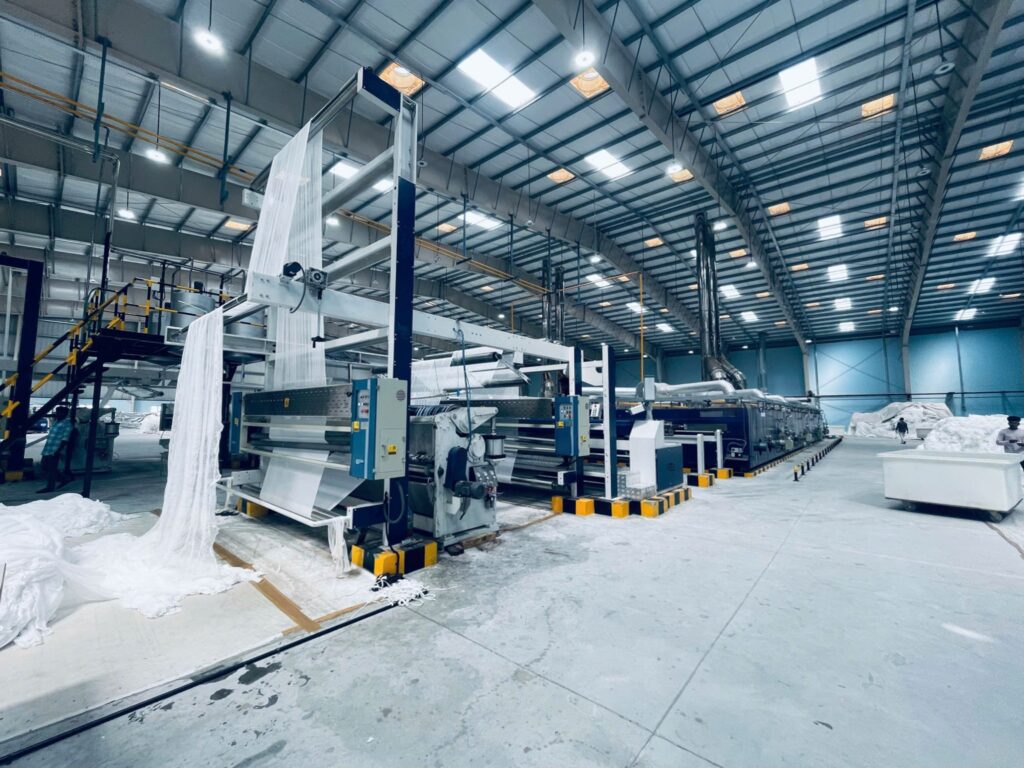Are you trying to learn how to level up a fabric finishing machine operation but struggling with inconsistent performance, quality issues, or frequent technical errors? You’re not alone. While modern stenters are powerful, mastering them requires more than just knowing the “on” switch. It demands practical experience and a deep understanding of how every setting and action impacts the final product.
This guide consolidates years of real-world, on-the-floor experience into a comprehensive A-Z manual for technicians, operators, and managers. We will cover expert operating techniques, common troubleshooting scenarios, proactive maintenance, and how to choose the right machine, empowering you to take full control of your finishing process.
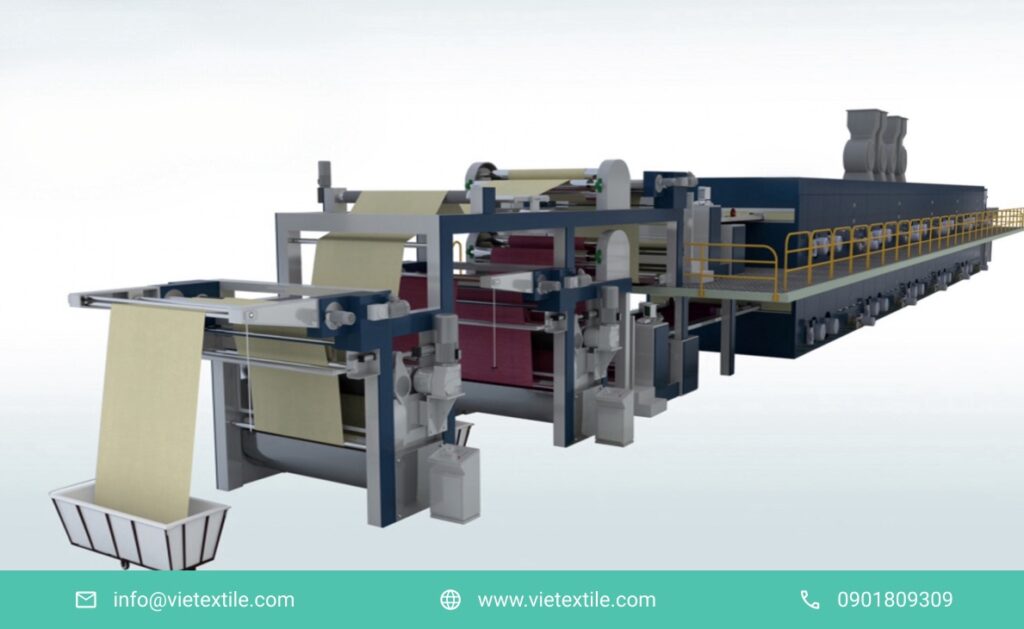
1. The Pre-Operation Ritual: A Technician’s Checklist
The most expensive errors are often prevented by a simple five-minute check before starting a run. Never skip this step. As one senior engineer from a major Southeast Asian textile mill shared, “Countless incidents arise because operators, in a rush, fail to verify sensor readings or check the inverter settings on the PLC. This is incredibly dangerous and can lead to component damage or even fires.”
For any fabric finishing machine operation, particularly in the demanding environments of textile dyeing and garment manufacturing, a thorough daily pre-shift checklist is crucial. This proactive routine ensures that your machinery, like a textile stenter machine, is fully prepared for optimal performance, helping to prevent costly downtime and maintain consistent product quality. By systematically checking key operational points before production commences, you empower your team to quickly identify and address minor issues, contributing to an uninterrupted workflow and superior output:
- System Pressure Check Fluid & Pressure Levels: As a crucial part of your daily pre-shift checklist for a textile stenter machine, verifying fluid and pressure levels is paramount for uninterrupted and quality production. Specifically, for stenters utilizing thermal oil heating, it’s essential to verify the thermal oil level to ensure consistent heat transfer and prevent damage. Concurrently, confirm that the pneumatic system has adequate compressed air pressure. This is vital for the precise operation of clips, tensioning devices, and other air-driven components, directly impacting fabric handling and dimensional stability. Diligence in these checks ensures your stenter operates efficiently, maintaining peak performance in demanding dyeing and finishing environments.
- Control Panel (PLC) Scan: As a crucial part of your daily pre-shift checklist for any textile stenter machine, always perform a thorough Control Panel (PLC) Scan. It’s imperative to check the PLC screen for any lingering error codes or warning signals from the previous shift. Identifying these alerts promptly can prevent minor issues from escalating into major breakdowns, ensuring smooth and uninterrupted operation. Once identified, acknowledge and clear them before proceeding with production and fabric finishing machine operation. This quick yet vital inspection allows textile and dyeing operators to address potential problems proactively, contributing to consistent fabric quality, minimized downtime, and overall operational efficiency in a high-production environment.
- Safety System Verification: For every textile professional overseeing a fabric finishing machine, the daily pre-shift inspection of safety systems is not merely a checklist item—it’s a critical duty. It is absolutely paramount to confirm that all emergency stops are easily accessible and responsive, light curtains are active and unbroken, and all safety guards are securely in place and fully functional. In the inherently fast-moving and high-temperature environment of textile stenters and other dyeing equipment, these layers of protection are your first line of defense against accidents. Ensuring their impeccable working order before production begins safeguards your most valuable asset: your operators, fostering a secure and productive workplace.
- Mechanical Walk-Around: As a foundational element of your daily pre-shift protocols for any textile stenter machine, a swift mechanical inspection at the fabric entry is non-negotiable. Take a moment for a targeted visual check of the pin or clip chains right at the machine’s infeed. It’s vital to confirm they are absolutely clean and completely free of any fabric remnants or accumulated lint from prior production runs. This pristine condition at the entry point is indispensable for smooth, reliable fabric gripping and seamless transport into the stenter, directly preventing misfeeds, selvedge damage, and ensuring consistent tension, all critical for high-quality fabric finishing.
2. The Art of Operation: Matching Machine to Material
Fabric finishing machine operation like a textile stenter technique is less about brute force and more about refined precision. It’s truly the art of operation: matching the machine’s parameters to the specific material being processed. Relying on a universal “standard” setting for all fabrics is a guaranteed path to suboptimal, if not disastrous, outcomes. Each fabric type possesses a unique molecular structure that demands tailored thermal and mechanical treatment to achieve ideal dimensional stability, handfeel, and overall quality.
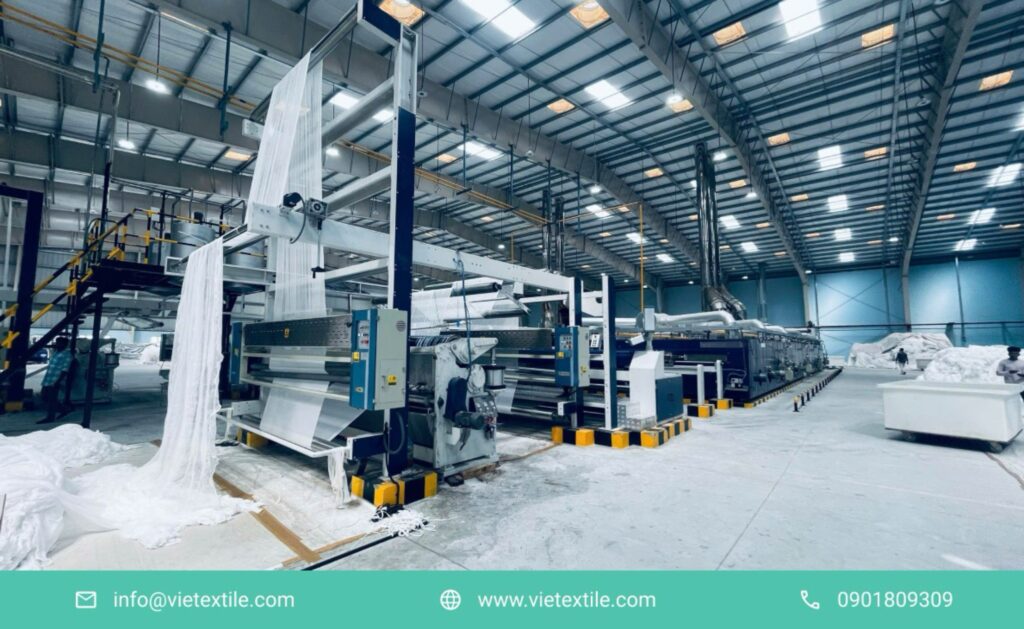
2.1 Optimal Settings by Fabric Type
Here’s a breakdown of recommended parameters for common Fabric Finishing Machine Operation with fabrics, crucial for any dyeing and finishing operation:
| Fabric Finishing Machine Operation | Recommended Temperature | Recommended Speed | Key Considerations |
| Polyester | 180°C – 200°C (355°F – 392°F) | High | Requires high heat to achieve “heat set” memory and prevent shrinkage. |
| Cotton | 140°C – 160°C (284°F – 320°F) | Medium | Lower heat prevents scorching, yellowing, and preserves the integrity of natural fibers. |
| Denim | 160°C – 170°C (320°F – 338°F) | Medium-Low | Slower speed allows heat to penetrate the thick fabric more effectively for better stability and handfeel. |
| Spandex Blends | 170°C – 190°C (338°F – 374°F) | Medium | Requires precise temperature control to set the elastane fibers without making them brittle or affecting elasticity. |
By meticulously adjusting your stenter’s settings according to these guidelines, textile businesses can unlock peak performance, minimize material waste, and consistently deliver superior finished fabrics that meet stringent industry standards.
Effective fabric finishing machine operation hinges on the operator’s diligent oversight throughout the entire process. It’s a dynamic role where operators must continuously monitor fabric appearance for any defects and meticulously check dimensions to prevent variations. This vigilance is crucial because timely adjustments to machine settings—such as speed, temperature, or chemical dosage—are essential for achieving the desired hand-feel, shrinkage control, and overall quality. A skilled operator doesn’t just run a machine; they interact with it, using real-time feedback from the textile to perfect the outcome, ensuring every yard of fabric meets precise specifications and upholding the highest standards of production.
Expert Tips for Experience: For unparalleled quality control in fabric finishing machine operations, particularly with textile stenters, seasoned professionals emphasize going beyond basic machine readouts. Don’t just rely on the machine’s internal temperature gauge; it’s a best practice to use a handheld infrared thermometer to spot-check the fabric temperature as it exits the machine. This provides an immediate, external verification of actual fabric heat. Furthermore, truly experienced operators often utilize advanced moisture sensors to ensure the fabric achieves optimal dryness, recognizing this as a far more accurate and data-driven measure of a completed process than simply relying on dwell time alone. This holistic approach guarantees superior dimensional stability and handfeel for high-quality finished textiles.
3. On-the-Floor Troubleshooting: An Experience-Based Guide
Even the most advanced equipment can encounter operational hurdles, and mastering your fabric finishing machine operation is crucial for maintaining quality and efficiency. While occasional issues are inevitable, the ability to rapidly and precisely diagnose problems—from incorrect tension settings to temperature fluctuations—is what sets successful textile finishers apart. Proactive fabric finishing machine operation and maintenance and a well-trained team are your first line of defense, ensuring that any deviation is addressed before it impacts the final product. This approach not only minimizes downtime and waste but also guarantees consistent, high-quality fabric finishing that meets the stringent demands of today’s market, turning potential challenges into a competitive advantage.
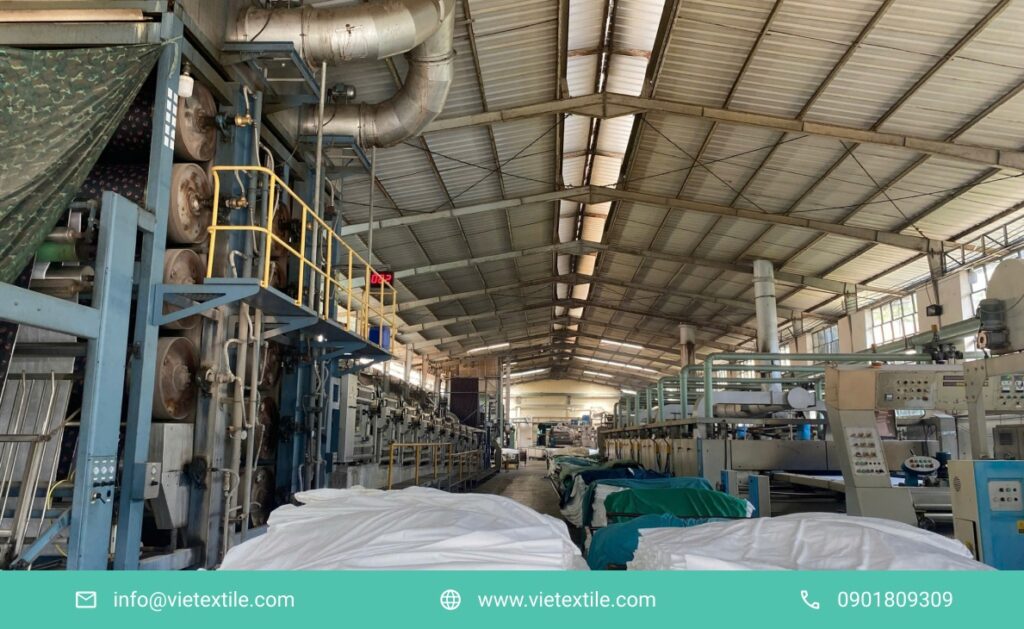
- Symptom: Unstable Temperature Alarms.
- Likely Cause: A dirty or faulty temperature sensor (thermocouple).
- Solution: Power down the machine safely. Remove the sensor and clean it carefully with a soft cloth. Reinstall and test. If the problem persists, the sensor has likely failed and requires a genuine replacement part.
- Symptom: Uneven Shrinkage or Warped Fabric by Fabric Finishing Machine Operation system.
- Likely Cause: Incorrect temperature, speed, or tension settings for the specific fabric type.
- Solution: Stop the run. Consult the fabric manufacturer’s technical data sheet for recommended settings. Run a small 5-10 meter test sample, adjusting one parameter at a time until the result is perfect. Document these settings for future runs.
- Symptom: Unusual Grinding or Squealing Noises.
- Likely Cause: Worn mechanical parts, most commonly bearings, or a lack of lubrication in the chain rail system.
- Solution: Immediately stop the machine. Perform a visual inspection to locate the source of the noise. Apply the recommended lubricant. If the noise continues, the part (e.g., a bearing) has likely reached the end of its life and needs to be replaced.
- Symptom: Unstable Air Pressure Alarms at fabric finishing machine operation controller.
- Likely Cause: A leak in the pneumatic system or a faulty pressure regulating valve.
- Solution: Check the main steam/air supply system. Inspect all hoses and connections for audible leaks. If no leaks are found, the pressure regulating valve may be stuck or broken and will require replacement.
Prioritizing safety is non-negotiable for any effective fabric finishing machine operation. Beyond the mechanics of production, a deep-seated commitment to safety protocols is essential for protecting your most valuable asset: your team. Adhering to proper safety procedures, which includes the mandatory use of appropriate personal protective equipment (PPE) like heat-resistant gloves, safety goggles, and protective garments, is the first step. This vigilance prevents accidents, minimizes risks associated with high temperatures and chemical exposure, and ensures a secure working environment. Ultimately, a safe operation is a productive and sustainable one, safeguarding both your workforce and your business’s reputation for excellence and responsibility in the textile industry.
4. Proactive Maintenance: The Key to Longevity for Fabric Finishing Machine Operation
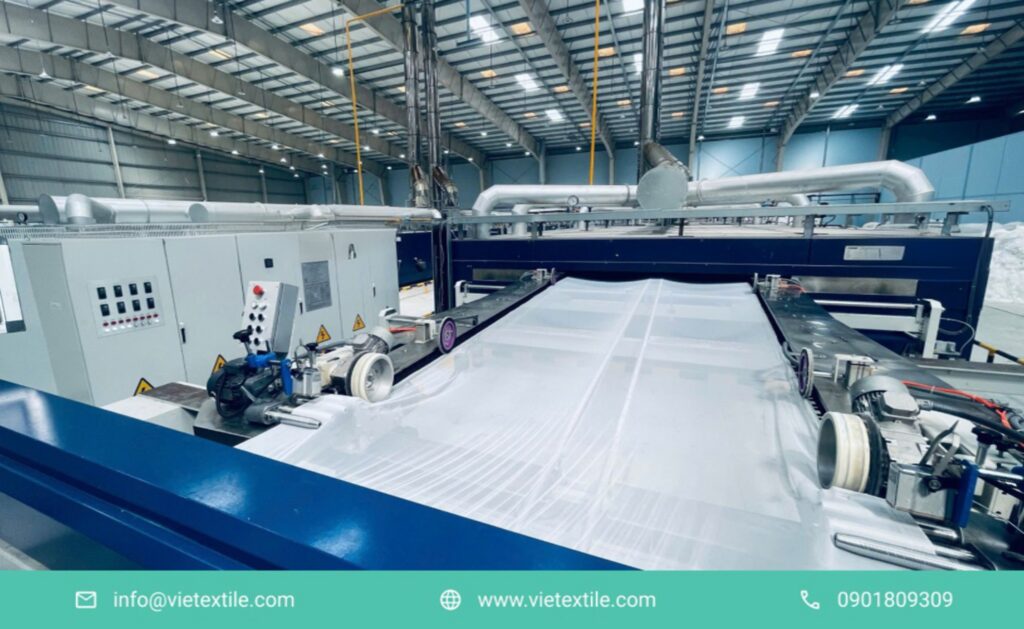
In the demanding world of textile production, a proactive approach to fabric finishing machine operation is paramount. You simply cannot afford to wait for your fabric finishing machine to break down. Instead, implementing a comprehensive proactive maintenance schedule is the most effective way to ensure longevity and consistent performance from critical equipment like textile stenters. Industry data strongly supports this, revealing that a well-executed maintenance plan can reduce the risk of serious breakdowns by over 30%. This foresight minimizes unexpected downtime, optimizes production efficiency, and ultimately protects your significant investment in high-value textile machinery, securing continuous, high-quality output for your dyeing and garment manufacturing operations.
- Weekly: For optimal fabric finishing machine operation and to ensure the longevity of your valuable equipment, a rigorous weekly maintenance schedule is paramount. During this crucial inspection, prioritize checking and cleaning the gearbox oil levels, which are vital for smooth mechanical function and preventing premature wear. Simultaneously, inspect bearings for any signs of friction or damage, and assess the condition of drive belts to ensure proper tension and prevent slippage. Furthermore, a meticulous cleaning of the pin/clip chains is essential to ensure seamless fabric transport and consistent tensioning. This proactive weekly regimen significantly reduces the risk of breakdowns, enhances efficiency, and secures continuous, high-quality output for your dyeing and finishing plant.
- Monthly: Optimizing fabric finishing machine operation extends to a crucial monthly maintenance regimen that safeguards your investment and ensures continuous quality. Every month, dedicate time to perform a full lubrication of all moving parts on your textile stenter machine or other finishing equipment. This vital step minimizes friction, reduces wear, and prevents costly breakdowns. Concurrently, it’s imperative to check and tighten all mechanical and electrical connections. Loose connections can lead to unstable performance, energy loss, or even safety hazards. Adhering to this detailed monthly schedule significantly prolongs machine lifespan, enhances efficiency, and ensures your dyeing and garment manufacturing processes remain productive and precise.
- Annually: To ensure flawless fabric finishing machine operation and protect your investment, scheduling a comprehensive annual service is non-negotiable. This preventative maintenance, performed by a qualified technician, goes beyond a simple check-up. It involves a deep inspection of critical components, including the main motor, precision encoders, and the entire control system, to preemptively identify wear and potential failures. Proactive servicing guarantees operational consistency, prevents unexpected downtime during peak production, and maintains the high-quality finish your customers demand. Ultimately, this yearly review is essential for extending the machine’s lifespan, optimizing energy consumption, and securing the profitability of your finishing department..
5. Strategic Optimization: Reducing Costs and Saving Energy
- Continuous Operation: Leveling up your fabric finishing machine operation is crucial for enhancing efficiency and reducing overheads. A key strategy is to prioritize continuous production runs over multiple shorter cycles. Frequent stops and starts are significant drains on energy, as each startup sequence initiates a full heating cycle from a cold state. This repeated heating consumes substantial power and increases thermal stress on components. By running the machine continuously for a long shift, you maintain a stable operating temperature, minimize energy waste, and improve overall throughput. This approach not only leads to considerable energy savings but also streamlines your entire finishing process for greater productivity.
- Choosing the Right Heating System: Optimizing your fabric finishing machine operation hinges on selecting the most efficient heating system. Whether you choose steam, thermal oil, or direct natural gas, the decision should align with your existing factory infrastructure and local utility costs. A comprehensive cost-benefit analysis is crucial before investment, as this choice profoundly impacts long-term operational expenses and production efficiency. Making an informed decision not only ensures consistent, high-quality fabric treatment but also secures a sustainable competitive advantage by minimizing energy consumption and maximizing your return on investment. Let us guide you through a detailed assessment to identify the most financially sound heating solution for your specific textile finishing needs.
- Invest in Energy-Saving Tech: In today’s competitive textile market, optimizing your fabric finishing machine operation is paramount to enhancing profitability and sustainability. Investing in modern finishing equipment integrated with advanced heat recovery systems is a strategic move towards significant cost reduction. These innovative machines are engineered to cut fuel consumption by more than 25%, directly lowering your operational expenditures. While the initial investment may be higher, the substantial annual savings on energy deliver a compelling return on investment, future-proofing your facility. Efficient fabric finishing machine operation is no longer just about output; it’s about adopting smarter, energy-conscious technology for long-term success.
6. Conclusion: Mastery Through Experience and Discipline
Effective fabric finishing machine operation is a blend of technical knowledge, hands-on experience, and a disciplined approach to process control. By implementing these real-world strategies for operation, troubleshooting, and maintenance, you can transform your finishing department from a potential bottleneck into a center of quality and efficiency, ensuring every meter of fabric that leaves your factory meets the highest possible standard.
6.1 Your Partner in Textile Finishing
VieTextile is a leading provider of high-quality machinery, equipment, and spare parts for the textile industry in Vietnam. We specialize in providing advanced Fabric Finishing Machine Operation and solutions tailored to your needs. Beyond equipment sales, we partner with our clients through expert technical consulting, in-depth operator training, and reliable after-sales service to optimize your production and business success.
Contact VieTextile today for a free consultation and quote!
7. FAQ
1. How often should a fabric finishing machine be fully serviced? Routine checks should be performed weekly and update fabric finishing machine operation, with a more thorough maintenance check monthly. A comprehensive technical service by a qualified engineer should be scheduled at least once per year.
2. What’s the difference between a thermal oil and an electric stenter? A thermal oil-heated machine provides very stable and even heat but takes longer to warm up and lost time in Fabric Finishing Machine Operation. An electric machine heats up much faster but typically has higher energy consumption costs.
3. How do I check a used fabric finishing machine before buying? Check the PLC for the total number of operating hours with fabric finishing machine operation shedule. Thoroughly inspect the pin/clip chains and rails for signs of wear. Ask for maintenance logs and run a test with your own fabric if possible.
4. My fabric comes out with uneven color. Is it a machine fault? It can be. If the stenter’s temperature is uneven across its width, it can affect how the dye sets. This is often caused by dirty fans or a failing heating element in one zone.
5. Why is operator training so important for these machines? Because a skilled operator can identify problems before they become critical in case of fabric finishing machine operation. They can hear a subtle change in machine noise or see a minor fabric defect and make adjustments immediately, saving thousands of dollars in wasted product and downtime.

